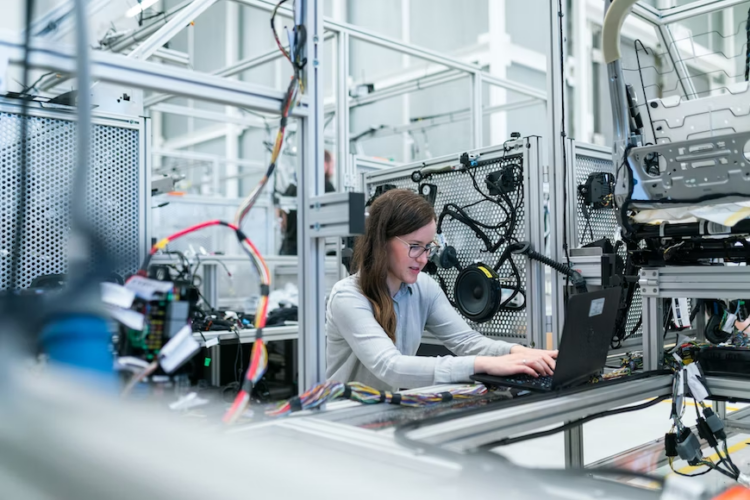Injection moulding is a standard manufacturing process created by injecting molten material to create its shape. Several materials can be used in this process, including metals (the process is known as die-casting), glass and elastomers, but thermosoft plastic is the most common. The process is pretty straightforward, using a plunger to force molten rubber into a cavity that solidifies it into a defined shape. Processing thermoplastics in this manner comes with many different advantages, such as the ease of recycling, the ability to soften with heating, and their versatility in a wide range of industries and for several applications.
Most of the moulds are designed from stainless steel or aluminium. The latter are generally inadequate for high-volume production, as their mechanical properties are more prone to damage and deformation during injection and clamping. They are also more susceptible to showing extensive signs of wear and tear. Their main advantage is the fact they’re cost-effective when it comes to low-volume applications. Conversely, steel moulds are designed to process well over a million items in their lifetime, but their costs are also considerably elevated, with manufacturing sometimes reaching hundreds of thousands of dollars.
Since the mid-1990s, the number of materials available for injection moulding has steadily increased by approximately 800 per year. When the trend began, there were roughly 18,000 materials available. Technology has allowed the creation of products that were, until relatively recently, impossible to create. Plastic springs are one example, with the advances in manufacturing and polymer fabrication making them not only possible but quite practical. However, the innovations are far from over, and there are still many more.
3D printing
3D printing isn’t as new as it may sound. However, it hasn’t always been as accessible as it is today. Only a decade or so ago, the process was significantly more expensive than it is today. The printers were bulkier, and purchasing one was a substantial investment. It was simply not feasible, and if a business required the process, other methods could be used. The use of 3D printers was also quite limited, and many believed that they would never become a commonplace solution to use.
Over the years, however, the costs have decreased tremendously while the variety of materials that can be used has expanded. Small companies often benefit the most. 3D printing is a cost-effective way to design prototypes for goods before settling down to manufacture them. Since smaller enterprises can’t afford to spend substantial funds on templates and frameworks, this procedure can go a long way. If a business has an idea for a product, but there’s no guarantee as to how feasible or valuable it is, 3D printing helps conduct the necessary tests so that you don’t spend money unnecessarily on products that only work in theory.
Sustainability
Sustainable processes have become increasingly crucial for businesses and industries everywhere. Customers are looking to buy from companies that abide by ethical standards, and failing short can mean that your customers choose to side with your competitors from now on. Generally speaking, injection moulding is a low-waste process since only the amount of material needed is placed into the mould. Therefore, even injection moulding large plastic products can be sustainable through the optimisation of the assembly and logistical solutions.
An injection moulding company with a passion for the craft can provide businesses with all the facilities necessary to manufacture products. Choosing suitable materials is very important since they aren’t chosen only based on traditional safety standards but also with the environmental impact in mind. This includes the product’s use, durability and the end of its life. Easily reusable or recycled materials are typically used, so you can be confident that your products are manufactured in such a way as to limit their detrimental effects on the environment.
Micro moulding
When it comes to increased production of injection moulding products, you’re probably thinking of larger and larger products, such as wide-screen TVs and laptops, automotive panels and other types of large-scale equipment. However, smaller objects are produced as well. Enter micro moulding, used to offer finesse to products that require it. The smartphone industry benefits substantially from this development, as devices have decreased in size and width, meaning that tinier components have become necessary.
The medical industry requires it in the creation of surgical tools and other medical apparatus. And, of course, the toy industry needs plastics designed with an eye for precision and which are long-lasting. Many popular children’s toys are made up of several moulded parts combined to create a single product. Therefore, micro moulding is one of the most significant contributions to the toy industry.
Remote monitoring
Remote location and work have become increasingly important over the past few years. This development is becoming increasingly accessible through applications and connected technologies. This software can be used to monitor several moulding machines simultaneously and keep track of the operations in real-time. They can also produce accurate reporting to keep everyone involved in the production process well-informed. This development has the potential to improve any industry, as everyone benefits from faster manufacturing rates.
Quality inspection
Special applications can be incorporated into daily quality control operations involved in manufacturing, allowing employees to make higher-level choices instead of tracking the same operations repeatedly. This process can reduce errors and the costs associated with poor quality and performance. Advanced data can be incorporated into the system in order to judge colour and shape harmony and see where notifications need to be made. These innovations are essential for the food and beverage industries as well as for construction materials, where poor quality can pose legitimate threats to customers’ lives.
The process of plastic moulding is an efficient way of creating a myriad of products. Since it uses strictly the amount of material necessary for production, it makes no unnecessary waste, and the production process helps the merchandise become easy to recycle after it can no longer be used. With innovations bound to appear over the years, it is clear that the industry still has many more developments to offer.



